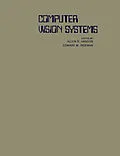Computer Vision Systems is a collection of papers presented at the Workshop on Computer Vision Systems held at the University of Massachusetts in Amherst, Massachusetts, on June 1-3, 1977. Contributors discuss the breadth of problems that must be taken into account in the development of general computer vision systems. Topics covered include the application of system engineering techniques to the design of artificial intelligence systems; representation and segmentation of natural scenes; and pragmatic aspects of machine vision. Psychophysical measures of representation and interpretation are also considered. This monograph is divided into four sections: Issues and Research Strategies, Segmentation, Theory and Psychology, and Systems. The first chapter explores the problem of recovering the intrinsic characteristics of scenes from images, along with its implications for machine and human vision. The discussion then turns to special-purpose low-level vision systems that can be flexibly reconfigured as the need arises; design, development, and implementation of large systems from the human engineering point of view; and representation of visual information. The next section examines hierarchical relaxation for waveform parsing; the topology and semantics of intensity arrays; and visual images as spatial representations in active memory. The use of edge cues to recognize real-world objects is also analyzed. This text will be a useful resource for systems designers, computer engineers, and scientists as well as psychologists.
Inhalt
List of Contributors
Preface
Acknowledgments
Introduction
Issues and Research Strategies
Recovering Intrinsic Scene Characteristics from Images
The Necessity for a Theory of Specialized Vision
System Engineering Techniques for Artificial Intelligence Systems
On the Representation of Natural Scenes
Vision Research Strategy: Black Magic, Metaphors, Mechanisms, Miniworlds, and Maps
Representing Visual Information
Characterization and Requirements of Computer Vision Systems
Pragmatic Aspects of Machine Vision
Segmentation
Hierarchical Relaxation for Waveform Parsing
Topology and Semantics of Intensity Arrays
Segmentation of Natural Scenes
Regular Hierarchical Image and Processing Structures in Machine Vision
A Parallel Model for Low-Level Vision
Vertical and Horizontal Processes in Low Level Vision
Theory and Psychology
Scene Analysis, Arrangements, and Homomorphisms
Surface Curvature and Applications of the Dual Representation
Visual Images as Spatial Representations in Active Memory
Computing the Next Step: Psychophysical Measures of Representation and Interpretation
Systems
A Partially Ordered World Model and Natural Outdoor Scenes
An Approach to Knowledge-Directed Image Analysis
Reading the Writing on the Wall
Visions: A Computer System for Interpreting Scenes
A Knowledge-Based Computer Vision System
Recognition of Real-World Objects Using Edge Cues
"Recognition Cones," and Some Test Results; The Imminent Arrival of Well-Structured Parallel-Serial Computers; Positions, and Positions on Positions
Theory Formation and Control in a Speech Understanding System with Extrapolations toward Vision
